
A veduta (Italian for 'view'; pl.: vedute) is a highly detailed, usually large-scale painting or, more often, print of a cityscape or some other vista. The painters of vedute are referred to as vedutisti.

A veduta (Italian for 'view'; pl.: vedute) is a highly detailed, usually large-scale painting or, more often, print of a cityscape or some other vista. The painters of vedute are referred to as vedutisti.
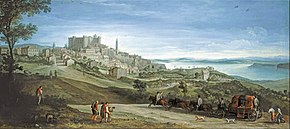
This genre of landscape originated in Flanders, where artists such as Paul Bril painted vedute as early as the 16th century. In the 17th century, Dutch painters made a specialty of detailed and accurate recognizable city and landscapes that appealed to the sense of local pride of the wealthy Dutch middle class. An archetypal example is Johannes Vermeer's View of Delft . The Ghent architect, draughtsman and engraver Lieven Cruyl (1640–1720) contributed to the development of the vedute during his residence in Rome in the late 17th century. Cruyl's drawings reproduce the topographical aspects of the urban landscape. [1]
As the itinerary of the Grand Tour became somewhat standardized, vedute of familiar scenes like the Roman Forum or the Grand Canal recalled early ventures to the Continent for aristocratic Englishmen. By the mid-18th century, Venice became renowned as the centre of the vedutisti. The genre was pioneered by Luca Carlevarijs, and its greatest practitioners belonged to the Canal and Guardi families of Venice. Some of them went to work as painters in major capitals of Europe, e.g., Canaletto in London and his nephew Bernardo Bellotto in Dresden and Warsaw.

In other parts of 18th-century Italy, idiosyncratic varieties of the genre evolved. Giovanni Paolo Pannini was the first veduta artist to concentrate on painting ruins. The Dutch painter Gaspar van Wittel (who worked in Rome, where he was known as Vanvitelli) and others painted veduta esatta, i.e. exact vedute, which was a topographically accurate depiction of a cityscape or monument and in which the human and animal figures played a secondary role. [2] His collaborators included Hendrik Frans van Lint, who would become one of the leading vedute painters in the first half of the 18th century. [3] Through his more realistic representation in the vedute he executed at the end of the 17th century and beginning of the 18th century, the Flemish painter Jan Frans van Bloemen anticipated developments during the 18th century, when there was a shift away from the classically oriented Roman landscapes of French vedute painters in Rome such as Gaspard Dughet. [4]

In later developments of the vedute, Pannini's veduta morphed into the scenes partly or completely imaginary elements, known as capricci and vedute ideate or veduta di fantasia. [2] Giambattista Piranesi was the foremost master of vedute ideate etchings. His topographical series, Vedute di Roma, went through many printings.
In the later 19th century, more personal "impressions" of cityscapes replaced the desire for topographical accuracy, which was satisfied instead by painted, and later photographed, panoramas. There was a sizeable community of émigré artists active in Venice, such as Antonietta Brandeis, the Spanish painters Martín Rico y Ortega, Mariano Fortuny, Antonio Reyna Manescau and Rafael Senet and the Peruvian painter Federico del Campo. These artists responded to the large international market for their city views of Venice, and they made such big names for themselves through this genre that they painted nothing but Italian views.

Demand for Federico del Campo's views, particularly from English tourists, was so strong that he painted several views multiple times, [5] and the same can be said of Reyna Manescau, that repeated the same urban landscapes in many occasions with minimal variations. [6]

Giovanni Antonio Canal, commonly known as Canaletto, was an Italian painter from the Republic of Venice, considered an important member of the 18th-century Venetian school.
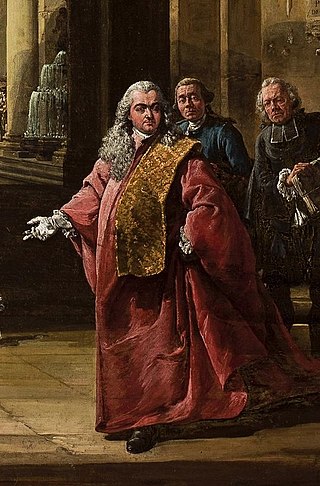
Bernardo Bellotto, was an Italian urban landscape painter or vedutista, and printmaker in etching famous for his vedute of European cities – Dresden, Vienna, Turin, and Warsaw. He was the student and nephew of the renowned Giovanni Antonio Canal, known as Canaletto, and sometimes used the latter's illustrious name, signing himself as Bernardo Canaletto. In Germany and Poland, Bellotto called himself by his uncle's name, Canaletto. This caused some confusion, however Bellotto’s work is more sombre in color than Canaletto's and his depiction of clouds and shadows brings him closer to Dutch painting.
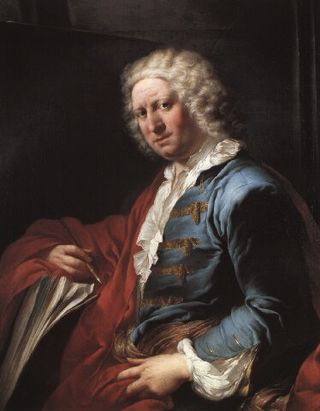
Giovanni Paolo, also known as Gian Paolo Panini or Pannini, was an Italian painter and architect who worked in Rome and is primarily known as one of the vedutisti. As a painter, Panini is best known for his vistas of Rome, in which he took a particular interest in the city's antiquities. Among his most famous works are his view of the interior of the Pantheon, and his vedute—paintings of picture galleries containing views of Rome. Most of his works, especially those of ruins, have a fanciful and unreal embellishment characteristic of capriccio themes. In this they resemble the capricci of Marco Ricci. Panini also painted portraits, including one of Pope Benedict XIV.
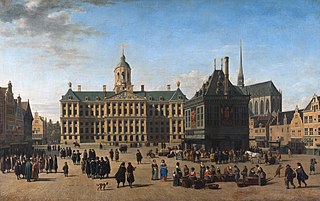
In the visual arts, a cityscape is an artistic representation, such as a painting, drawing, print or photograph, of the physical aspects of a city or urban area. It is the urban equivalent of a landscape. Townscape is roughly synonymous with cityscape, though it implies the same difference in urban size and density implicit in the difference between the words city and town. In urban design the terms refer to the configuration of built forms and interstitial space.

Jan Frans van Bloemen was a Flemish landscape painter mainly active in Rome. Here he was able to establish himself as the leading painter of views (vedute) of the Roman countryside depicted in the aesthetic of the classical landscape tradition.

Caspar van Wittel or Gaspar van Wittel, known in Italian as Gaspare Vanvitelli or Gasparo degli Occhiali, was a Dutch painter and draughtsman who had a long career in Rome. He played a pivotal role in the development of the genre of topographical painting known as veduta. He is credited with turning topography into a painterly specialism in Italian art.
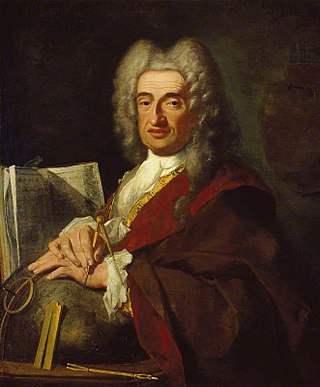
Luca Carlevarijs or Carlevaris was an Italian painter and engraver working mainly in Venice. He pioneered the genre of the cityscapes (vedute) of Venice, a genre that was later widely followed by artists such as Canaletto and Francesco Guardi.

Michele Marieschi or Michele Giovanni Marieschi, also Michiel, also known as Michiel, was an Italian painter and engraver. He is mainly known for his landscapes and cityscapes (vedute), or views, mostly of Venice. He also created architectural paintings, which reveal his interest in stage design.

Pieter van Bloemen, also known as Standaart, first name also spelled Peter or Peeter, was a Flemish painter, draughtsman and printmaker. He was a gifted landscape and animal artist and was very successful with his compositions depicting Italian landscapes with figures, equestrian battles, animals and genre and market scenes.

Antonietta Brandeis (1848–1926), was a Czech-born Italian landscape, genre and portrait painter, as well as a painter of religious subjects for altarpieces.
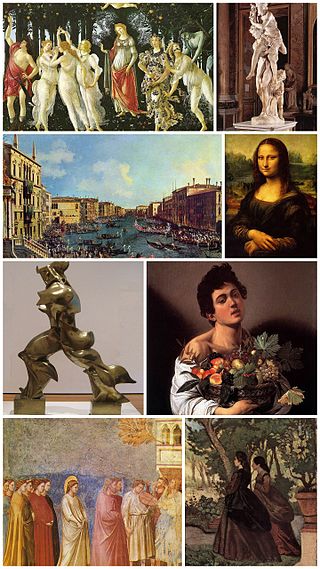
Italian Rococo art refers to painting and the plastic arts in Italy during the Rococo period, which went from about the early/mid-18th to the late 18th century.

Giovanni Migliara (October 15, 1785 in Alessandria – April 18, 1837 in Milan), was a nobleman and Italian painter active at the beginning of the 19th century, painting vedute and history paintings.

Lievin Cruyl or Lieven Cruyl was a Flemish priest and a draughtsman and etcher of landscapes, seascapes, and architectural views. The drawings and etchings he made during his extended stays in Italy and Paris contributed to the development of the topographical views known as veduta.
Martín Rico y Ortega was a Spanish painter of landscapes and cityscapes.
Hendrik Frans van Lint was a Flemish landscape and vedute painter who was part of the group of Flemish and Dutch painters active in Rome. He was one of the leading landscape painters in Rome in the first half of the 18th century and his patrons included Rome's old aristocratic families as well as European travellers on their Grand Tour.

Gennaro Greco also known as "Il Mascacotta" (1663–1714) was an Italian architectural painter who was active in Naples during the late Baroque period. He is known for his architectural paintings, capricci, compositions with ruins, as well as his vedute. His vedute fall mostly in the category of the so-called vedute ideate which represent closely observed views of completely imaginary landscapes.
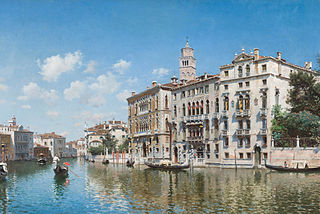
Federico del Campo (1837-1923) was a Peruvian painter who was active in Venice where he was one of the leading vedute painters of the 19th century. Demand for his views, particularly from English tourists was so strong that he painted several views multiple times.

Architectural painting is a form of genre painting where the predominant focus lies on architecture, including both outdoor and interior views. While architecture was present in many of the earliest paintings and illuminations, it was mainly used as background or to provide rhythm to a painting. In the Renaissance, architecture was used to emphasize the perspective and create a sense of depth, like in Masaccio's Holy Trinity from the 1420s.

Alessandro Salucci was an Italian painter who played an important role in the development of the genre of cityscapes (vedute) of Rome. He created capricci, i.e. imaginary architectural perspectives and harbour views, in which the figures were often executed by another artist.
Francesco Panini or Pannini, was an architecture and landscape painter, draughtsman and publisher of prints from the 18th and early 19th century living in Rome, capital of the Papal States, present-day Italy.